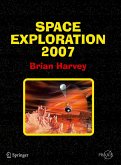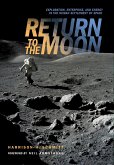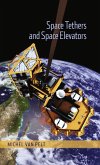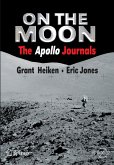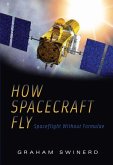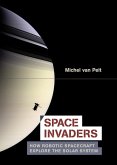It's been thirty-five years since people last trod the dusty plains of the Moon. Over the course of six landings from 1969 to 1972, twelve men explored, four-wheeled, dug and hiked across the lunar surface. Now, NASA has plans for a seventh landing on the Moon. This time, they want to stay. NASA's plans, dubbed the Constellation architecture, involve the largest launch vehicle ever built, new types of propulsion, and a six-person vehicle to ferry crews from Earth to the Moon. But NASA's plans go far beyond Luna. Eventually, the lessons learned on the Moon's outpost at Shackleton Crater will teach us how to live-permanently-on the most Earthlike world in our solar system, Mars. NASA will have company: plans for future lunar exploration are being drawn by Europe, Japan, China and India.
While specific hardware and mission details will be in flux for some time, the overarching goals, strategies and inspiration for the seventh landing will not change. This book will choosea typical scenario for getting to the Moon that embraces the spirit of exploration embodied by NASA's Constellation architecture. Each chapter moves from a general description to the specific nuts-and-bolts of engineering and science. The Seventh Landing reveals the very latest strategies for how we'll get to the Moon, what we know today, what we want to find out, and what life will be like at the first true outposts on the Moon and Mars.
Hinweis: Dieser Artikel kann nur an eine deutsche Lieferadresse ausgeliefert werden.
While specific hardware and mission details will be in flux for some time, the overarching goals, strategies and inspiration for the seventh landing will not change. This book will choosea typical scenario for getting to the Moon that embraces the spirit of exploration embodied by NASA's Constellation architecture. Each chapter moves from a general description to the specific nuts-and-bolts of engineering and science. The Seventh Landing reveals the very latest strategies for how we'll get to the Moon, what we know today, what we want to find out, and what life will be like at the first true outposts on the Moon and Mars.
Hinweis: Dieser Artikel kann nur an eine deutsche Lieferadresse ausgeliefert werden.
From the reviews:
"Science journalist Michael Carroll's account of future human missions to the Moon looks at the hardware and exploration strategies that might one day make us long-term inhabitants of our nearest neighbour in space. The Seventh Landing is a great read for young people. ... The book is full of great pictures, including artworks created by the author, who favours the use of paint. It's a refreshing change from the all-too-perfect computer renditions that NASA tends to use these days." (Piers Bizony, Sky at Night Magazine, October, 2009)
"This is a superb look at how and why humans should return to the Moon. ... The clever title of the book sets the stage for a well-written and insightful appraisal of sending humankind once again to Earth's neighboring world ... . words and artwork are super, with the text also drawing upon interviews with Apollo and shuttle astronauts, as well as Soviet cosmonauts. This is a very readable volume, perfect for the general reader and the rarified space cadet." (Leonard David, Space Coalition Blog, November, 2009)
"In this beautifully illustrated, large-format book, science writer/artist Carroll begins with a review of unmanned and manned explorations of the moon. ... The author presents the details of Constellation including the designs of the Ares rockets, the Orion moon capsule, and the Altair lander. ... Carroll outlines how some in the spaceflight community view the lunar missions as a distraction from the main goal of human missions to Mars. Summing Up: Recommended. All levels of general readers and undergraduate students interested in space exploration." (J. Z. Kiss, Choice, Vol. 47 (6), February, 2010)
"Science journalist Michael Carroll's account of future human missions to the Moon looks at the hardware and exploration strategies that might one day make us long-term inhabitants of our nearest neighbour in space. The Seventh Landing is a great read for young people. ... The book is full of great pictures, including artworks created by the author, who favours the use of paint. It's a refreshing change from the all-too-perfect computer renditions that NASA tends to use these days." (Piers Bizony, Sky at Night Magazine, October, 2009)
"This is a superb look at how and why humans should return to the Moon. ... The clever title of the book sets the stage for a well-written and insightful appraisal of sending humankind once again to Earth's neighboring world ... . words and artwork are super, with the text also drawing upon interviews with Apollo and shuttle astronauts, as well as Soviet cosmonauts. This is a very readable volume, perfect for the general reader and the rarified space cadet." (Leonard David, Space Coalition Blog, November, 2009)
"In this beautifully illustrated, large-format book, science writer/artist Carroll begins with a review of unmanned and manned explorations of the moon. ... The author presents the details of Constellation including the designs of the Ares rockets, the Orion moon capsule, and the Altair lander. ... Carroll outlines how some in the spaceflight community view the lunar missions as a distraction from the main goal of human missions to Mars. Summing Up: Recommended. All levels of general readers and undergraduate students interested in space exploration." (J. Z. Kiss, Choice, Vol. 47 (6), February, 2010)


